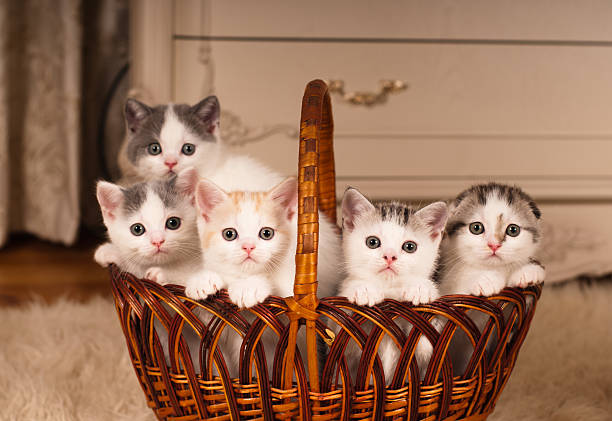When you have a cat at home, of course you will do anything to make your favorite cat. Especially if you have a female cat at home. In terms of caring for female cats, it requires more environmental care. Not only in terms of treatment, food also must be very careful. For example, if your female cat has two bodies and gives birth. In general, the care of female cats after giving birth will be very different from those who do not give birth.

The method of giving birth also needs to be considered whether it takes natural birth or with human encouragement. Another thing is to provide a supportive nursing environment for the kittens. Like humans, antibodies from mother cat’s milk have a significant role in the development of newborn kittens. For that, the mother cat needs good nutrition. Good nutrition is found in large-served and nutritious meals. Here are some treatments for cats after giving birth:
1. Periodically sterilize the cat’s body
This one treatment is absolutely necessary so that the body condition of the mother and kittens is clean. Usually, after giving birth, the mother cat’s body looks more dirty than usual. Cat hair looks very sticky. If the cat’s body is in a dirty condition, it will affect the health of the mother and child’s skin. If you don’t want your beloved cat to suffer from skin diseases, make sure that his body hygiene is always protected. The trick is, you can wash the feathers with a damp cloth.
2. Place Care
After giving birth, the mother cat generally seems more sensitive. For that, you need to prepare a very safe resting place. Avoid any noise and do not disturb other animals. Cover the cat’s rest area with a dry towel or cloth. Replace the cloth or towel if it looks dirty and wet. A mother and newborn kittens will be safer if their home is clean and dry. Not only that, places to eat and drink must also be observed for the level of cleanliness.
3. Checking for Disease after Childbirth
After giving birth, your favorite mother cat usually has several problems related to her health. The mother cat can have a disease that is quite risky. These diseases, for example, mastitis, hypocalcemia and endromitis. Mastitis is a type of inflammatory disease of the mammary glands that can occur due to the production of thick and clogged mother cat milk.
Cue the nipples feel hot and enlarged. Hypocalcemia is a lack of calcium when cats have two bodies and are breastfeeding. Cue with cramps and worry. On the other hand, endometritis is an inflammation that occurs in the uterus and is characterized by fever, weakness, and little milk production. So, special checks are needed for cats that have just given birth.
4. Add food rations
This is normal for a mother cat after giving birth. This happens, because the mother cat needs a lot of calories which will later be absorbed by the suckling kittens. You can increase the ration of food for the mother cat by always maintaining cleanliness and nutrition. You can also add special meals for mothers who are breastfeeding. This is tried so that the kittens get balanced nutrition. If necessary, consult and ask your veterinarian for a formula for the feeding of lactating mothers.
5. Provision of vitamins
Giving extra vitamins can help the mother cat recover quickly and maximize the growth of the mother and kittens. There are some vitamins that a mother cat needs. Such as calcium, minerals, phosphorus iron, and sodium. But what you need to remember is not to give vitamins with inappropriate doses and doses. This can stimulate other diseases that might harm the cat’s body.
6. Protect the seriousness of the interaction
Mother cats are prone to stress after giving birth. The mother cat will feel choked up if there is a lot of interaction from either other animals or family members in your home. Therefore, as much as possible you keep your distance and reduce the seriousness of visiting the mother and kittens. If necessary, you only need to go to your favorite cat when changing the bed, giving food or cleaning the cat’s body. But also make sure to pay close attention to the cat’s condition if at any time the cat needs encouragement.
7. Avoid Mother Cat With Males
Generally, around 4 weeks after giving birth, the mother cat begins to wean her kittens. So the calories needed are slightly decreased. Try to keep male cats away from mother cats who have just given birth. This is because the mother cat’s body after giving birth will be easily heated and aroused. If you don’t want your cat to have two bodies and then abandon its children, you should avoid males. If the mother cat has two bodies, it is feared that it will have an impact on her body because she is not yet healthy.
8. Don’t separate kittens from their mother
Try not to separate the kitten from its mother. This will help kittens in terms of treatment. The mother cat generally sterilizes the remnants of the placenta attached to her child. This is necessary so that the kittens are clean and then dry. Not only that, kittens are still dependent on their mother.
9. Train the Movement of the Mother Cat and Her Children
You can train the mother cat and her kittens after giving birth by inviting her to play after 4 weeks. The trick is, you can make a simple toy to trigger the movement of your beloved cat. But what needs to be remembered, the training is held according to the age of the kittens. Increase movement training every month. This is done so that the movement of the muscles and nerves grows quickly. To be safer, use toys made of soft material and suitable for cats.